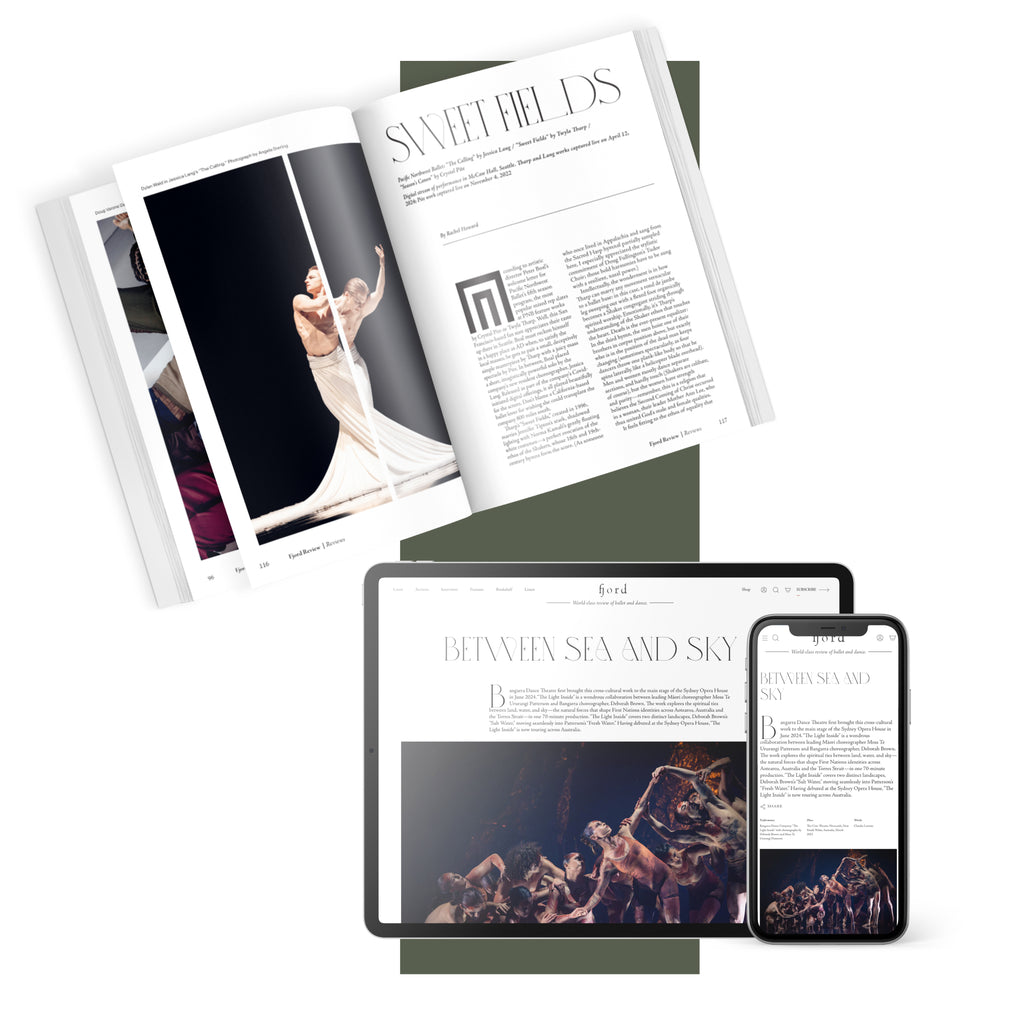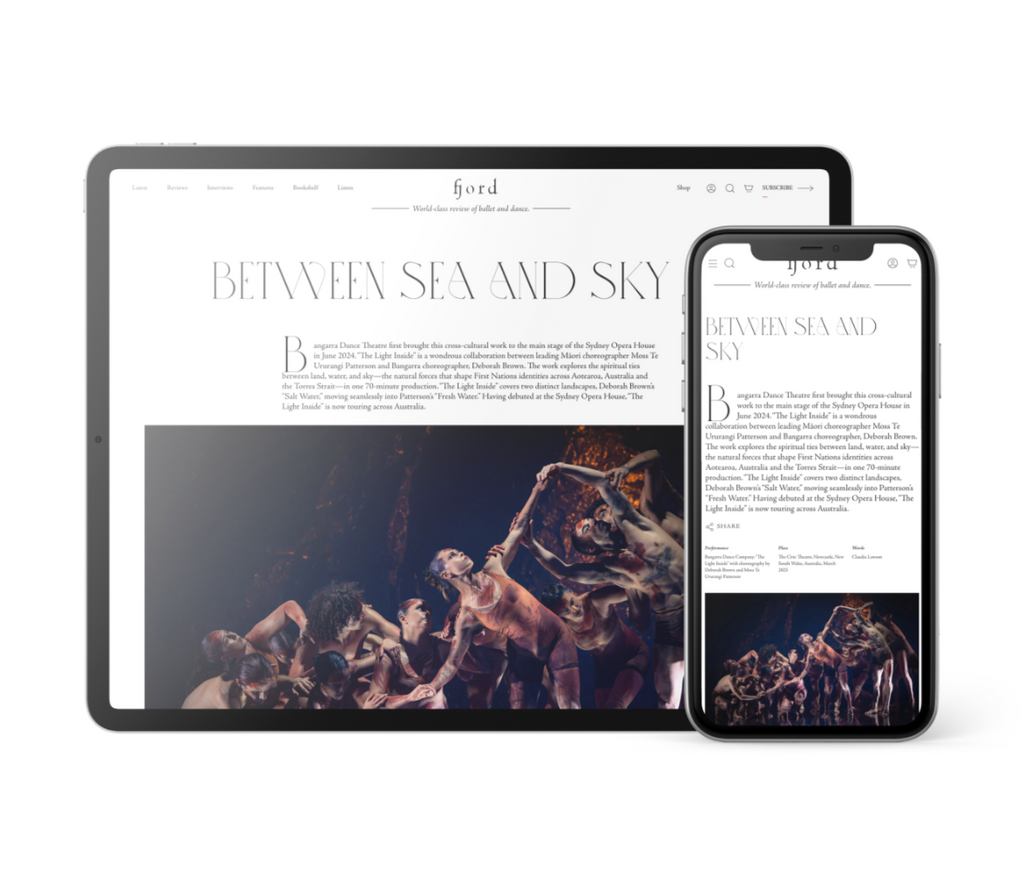In the black beyond, a planet engulfed in flames rotates. I am unsure if the planet is Earth, and a sign of what awaits, or if it is a fireball coming towards Earth, a sign, too, of what awaits. Unsure, in the sense that Lane has created a work in which I feel invited to surrender to meditation, I sit and let the stream of consciousness surround me. I may have been too earthbound in my reading; speculative utopia calling: lean into the virtuosic. “Arkadia” is the first work presented by Corps Conspirators led by Lane,[1] with an emphasis upon multi-artform collaborations, and it features a 3D animation, developed by Tokyo-based artist Kim Laughton, projected across screens that are interlaced with Eugyeene Teh’s set design (drawn from Marg Horwell’s original set design concept), as well as each of the six performers’ cultural and personal histories. As Lane describes, in “Arkadia” there are “multiple fictional narratives that interconnect the dancers through a shared experience of physical transformation and mythic conjuring.”[2]
Inhabiting the shadow groves and verdant meadows of the Roman poet Vergil, Rachel Coulson, Tyrel Dulvarie (from Bangarra Dance Theatre), Benjamin Hancock, Samuel Harnett-Welk and Georgia Rudd have crossed the threshold and are in perpetual spring. Shedding skins (of latex, tulle) they pose: what happens to our bodies after we pass? Let’s see. From afar, they could be carrying marble funerary vessels, from which water freely flows. Upon the screen, the rocky-faced temple of Ancient Virtue flickers before it grows into something other, such is the cycle of life, death, transition, and rebirth. Homer’s Elysian Fields by the river Styx meets the prolific growth of plants, irrespective of season, in the Garden of Eden. The science fiction of Jules Verne collides into Ursula K. LeGuin’s Earthsea books in the melting pot pooled under the sky.











comments